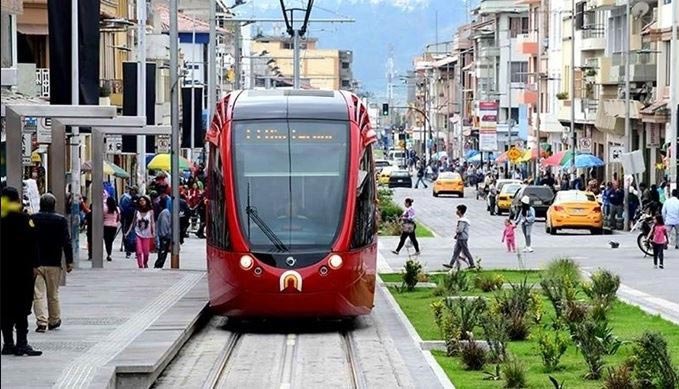The Cuenca tram celebrated its three-year anniversary of commercial operation in September 2023, yet it remains disconnected from the city’s broader transportation network, grappling with financial woes. Mayor Cristian Zamora candidly admitted that achieving economic equilibrium for this multimillion-dollar transportation system is a distant dream.
The Cuenca tram, a substantial investment amounting to nearly $300 million in construction costs and ongoing operational expenses, has yet to discover a sustainable model that reins in its financial hemorrhage. Although it carries approximately 20,000 passengers daily, this figure falls short of what’s necessary to offset its operational costs, says Cuenca’s mayor Cristian Zamora. The Municipality shoulders a significant portion of these operational expenses and outstanding debts.
Insurmountable debts
To put things in perspective, the tram necessitates an annual budget of at least $5.5 million for its operation, yet in 2022, it managed to generate a meager $2.7 million, according to data from the prior municipal administration. Reports from April 2023 indicated that the Tram Execution Unit had been able to cover a mere 60% of its operating expenses through ticket sales and advertising.
Over the course of its three years in operation, the tram has accrued additional financial obligations. In early September, the Municipality inked a contract for the procurement of parts and spare components, incurring a cost of $2.7 million.
Despite the Municipality’s valiant efforts, the Cuenca tram remains mired in debt. It is obligated to make semi-annual payments to Natixis, a French bank, to pay off a debt of $50 million. President Guillermo Lasso has offered to support the repayment of this debt on multiple occasions, but as of early September, this offer had not materialized, according to the Municipality. In addition to the ongoing operating expenses and construction-related debt, the tram has also triggered other financial liabilities, such as arbitration losses totaling nearly $10 million incurred by contracting firms working with the Municipality of Cuenca.
In mid-September 2023, the Municipality took the step of restructuring a $7 million debt owed to the Cuatro Ríos de Cuenca Consortium, which was responsible for overseeing the tram’s civil works. Furthermore, two additional legal proceedings are currently underway, adding to the Municipality’s fiscal burdens.
Mayor Cristian Zamora, reflecting on the dire financial situation, remarked that the tram “will never even be in economic balance.” Despite this grim prognosis, efforts persist to minimize the subsidy that Cuenca’s residents contribute to keeping the tram operational.
System integration still only a concept
One key strategy to boost ridership and alleviate the financial shortfall revolves around the integration of the tram into the broader public transportation system. This integration is slated to occur both physically and technologically. Mayor Zamora envisions a scenario in which the tram becomes integrated with public bicycles by the first quarter of 2024 and subsequently with urban buses. This strategic move aims to augment the number of passengers, potentially enhancing the tram’s economic viability.
Until these integration efforts come to fruition, the Cuenca tram will continue to operate under the shadow of mounting debts accrued during its construction and implementation phase. The path to financial stability remains uncertain, but the Municipality of Cuenca remains committed to exploring all avenues to make this ambitious transportation project a more sustainable part of the city’s infrastructure.


“To put things in perspective, the tram necessitates an annual budget of at least $5.5 million for its operation, yet in 2022, it managed to generate a meager $2.7 million”
But what Public Transit system pays for itself anywhere on the planet?
The Best of the Best in the US is Chicago’s Public Transit system (CTA) which generates 50% of it’s annual operating budget from fares and advertising on trains and buses. Almost identical to that of the Tranvia.
All Public Transit Systems are taxpayer subsidized.